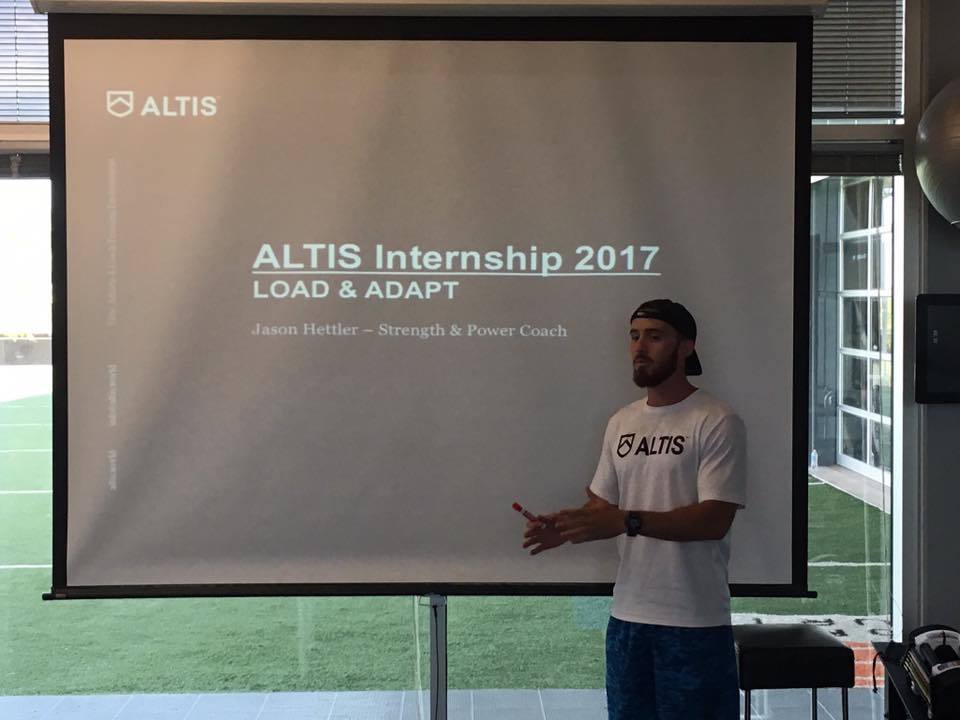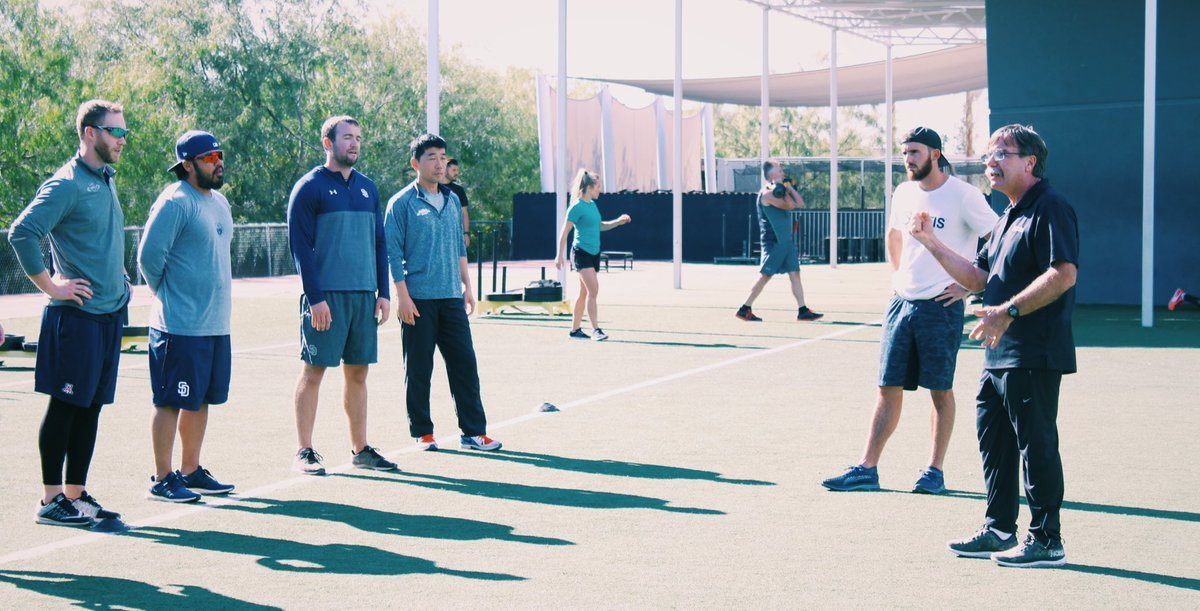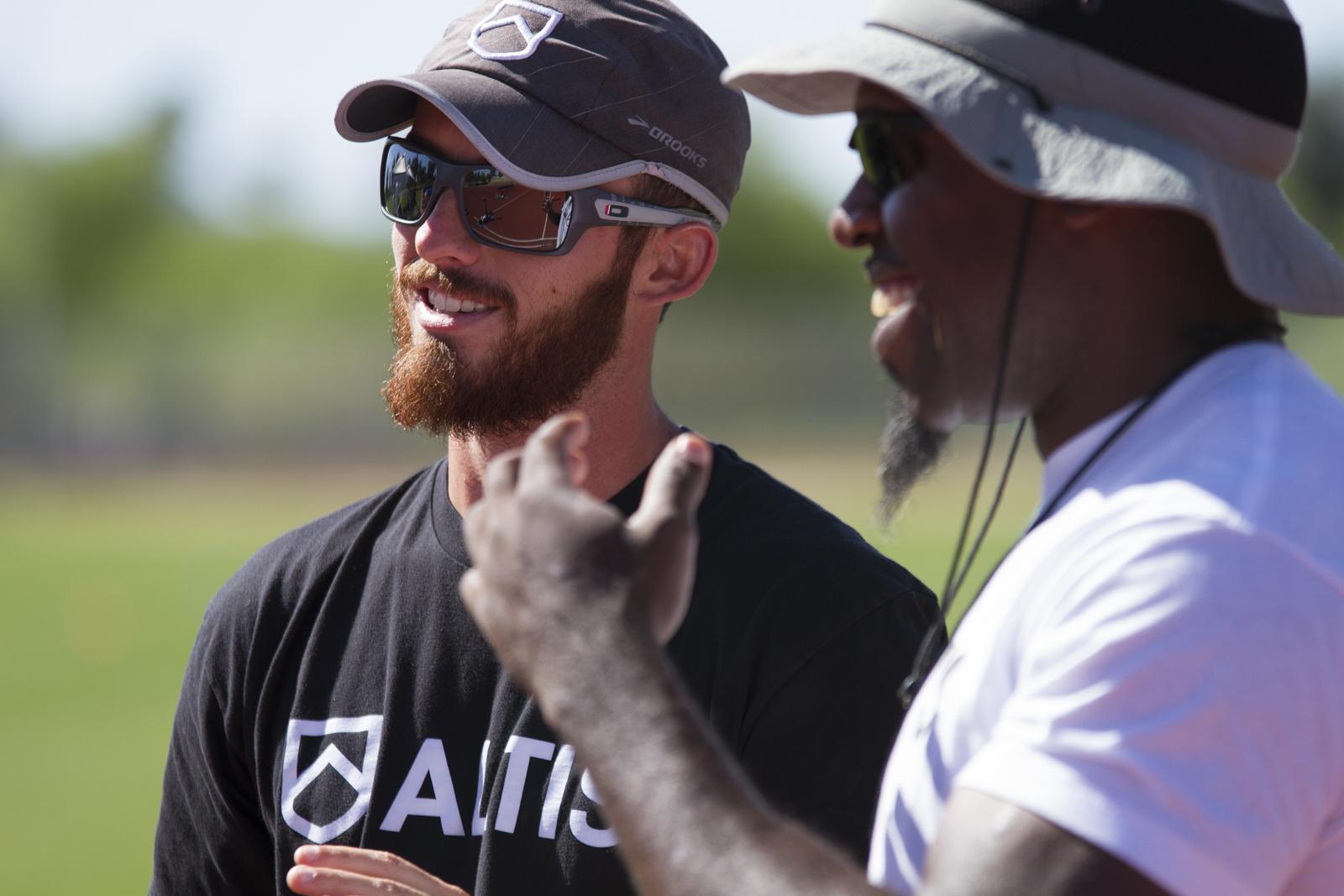This article, written by ALTIS Strength & Power Coach – Jason Hettler outlines some of the strategies used by ALTIS to develop effective Strength Training Programs.
The development and progression of a strength training program from early season training into the competitive season is a common concern of many coaches I speak with. Additionally, many of the interns that come through ALTIS express difficulty in knowing where to begin with their programming.
I will not attempt to resolve this issue directly. Rather, it is my hope that by providing insight into some of the programming strategies we employ with our unique population, it will provide individuals with more direction on how to navigate their own unique situation.
Philosophy
That being said, it is necessary to highlight some important first steps within this realm. Firstly, it is advised to develop a coaching philosophy: this will serve as a framework to guide decision-making throughout the programming and implementation phases. From here, conducting an Athlete-Sport Audit and identifying both Foundational Performance Factors (FPFs) and Key Performance Indicators (KPIs) prior to writing strength training programs is vital to overall organization and efficiency.

Training Themes
The progression of strength training programs at ALTIS, while fluid and individualized, does contain some common themes. Firstly, it is important to clearly define loading parameters and session objectives. For this reason we use a zonal system of categorization:
Zone 1 = Explosive Strength
Zone 2 = Work Capacity/Muscle Hypertrophy
Zone 3 = Maximum Strength
While this is a gross oversimplification of the training process and all the weight room has to offer, it provides an appropriate amount of context to begin the discussion on programming, particularly when relaying this information to the athletes.
In most instances our athlete group has a training age ranging from 5-8 years. Combine this with oftentimes very high levels of force generation abilities, and we have a well-versed athlete regarding strength training.
When we eliminate the need to place a greater emphasis on any single zonal category relative to another, we fall into a complex-parallel periodization strategy that allows us to target each zone each week. This is where we begin our training season. With strength training occurring 4 days per week, we program two Zone 1 sessions, and one session each for Zones 2 and 3.
The justification behind multiple Zone 1 sessions per week is two-fold. Firstly, Zone 1 loading lends itself to act as a potentiator for subsequent sessions. For this reason, it is placed just prior to our heavier loaded days. Secondly, with an intent of maximal velocity, the adaptations from Zone 1 sessions often include increases in both explosive and maximal strength. Therefore, it serves to enhance widespread strength abilities, without having to place excessive axial load on the athlete.
It is important to note here that although Zone 1 work occurs most often, the structure is designed to emphasize the Zone 2 and 3 workouts in the early stages of the training year. With this, these sessions will be followed by an active or passive recovery day.
Progressing through the year, accompanying an increase in intensity on the track we will see a decrease in strength training density. Hypertrophy being contraindicated for sprinters in most instances means Zone 2 sessions are the first to drop out and strength training is reduced to 3 days per week.
Before reading on, check out the video below which further explains this structure:
Competition strength cycles
As we enter the competitive season the density continues to decrease. Our strength sessions will now occur two days per week as we cycle through each zonal objective. Inserting this into our 3-week mesocycle leaves 10 days in-between repeating any given zone, and allows us to target each zone twice per mesocycle.
These lower density patterns facilitate more accurate fatigue management and highlight the supplemental nature of strength training at the elite level. Health and technical execution are the Key Performance Indicators through the competitive season, and it would be foolhardy to allow the weight room to interfere.

Application
I am not relaying this information for it to be simply copied and implemented elsewhere. The programming for elite athletes should not be followed blindly for developing populations. It can be easy to get caught up in “doing what the pros are doing” without considering the countless hours of training that got them to that point. While the zonal system of categorization has widespread utilization, the structure surrounding it should be carefully considered. For instance, placing emphasis on one zonal objective and building from this may be a great tactic in the developmental realm. As an example, a concentrated block of training targeting Zone 2 adaptation, followed by a concentrated block on maximal strength, which then culminates with a focus on increasing explosive strength abilities.
Constructing a coaching philosophy and performing an Athlete-Sport Audit are the beginning stages to programming strength training. From there, understanding the unique characteristics of one’s own situation and thinking critically about what other’s in the field are doing will shed some light on both where to begin and the desired end goal.
For more information on the fundamentals of program design check out Semester 3 of the ALTIS Foundation Course. With a release date of December 1st, 2017 the final semester modules take a comprehensive journey all things strength and speed!


